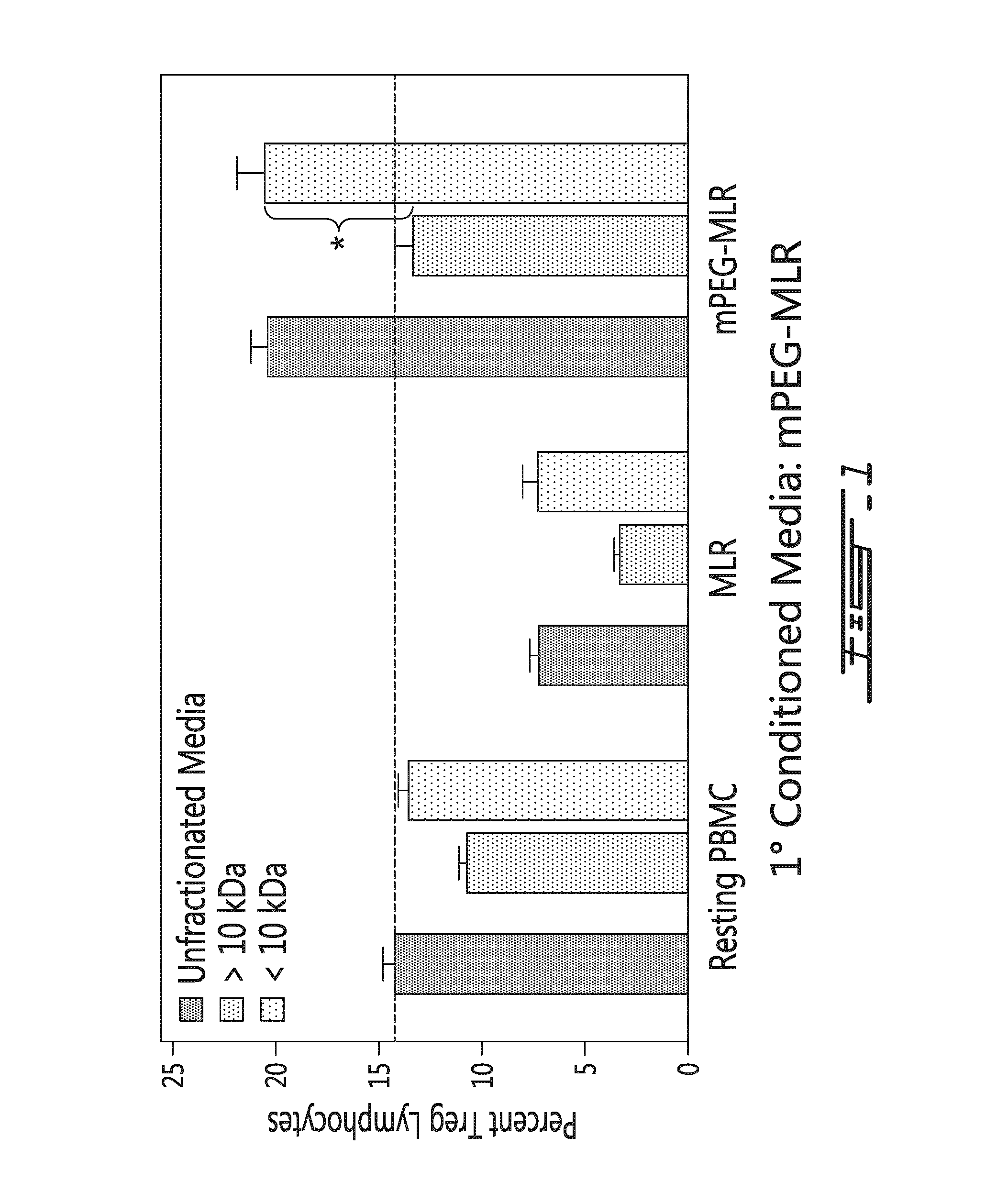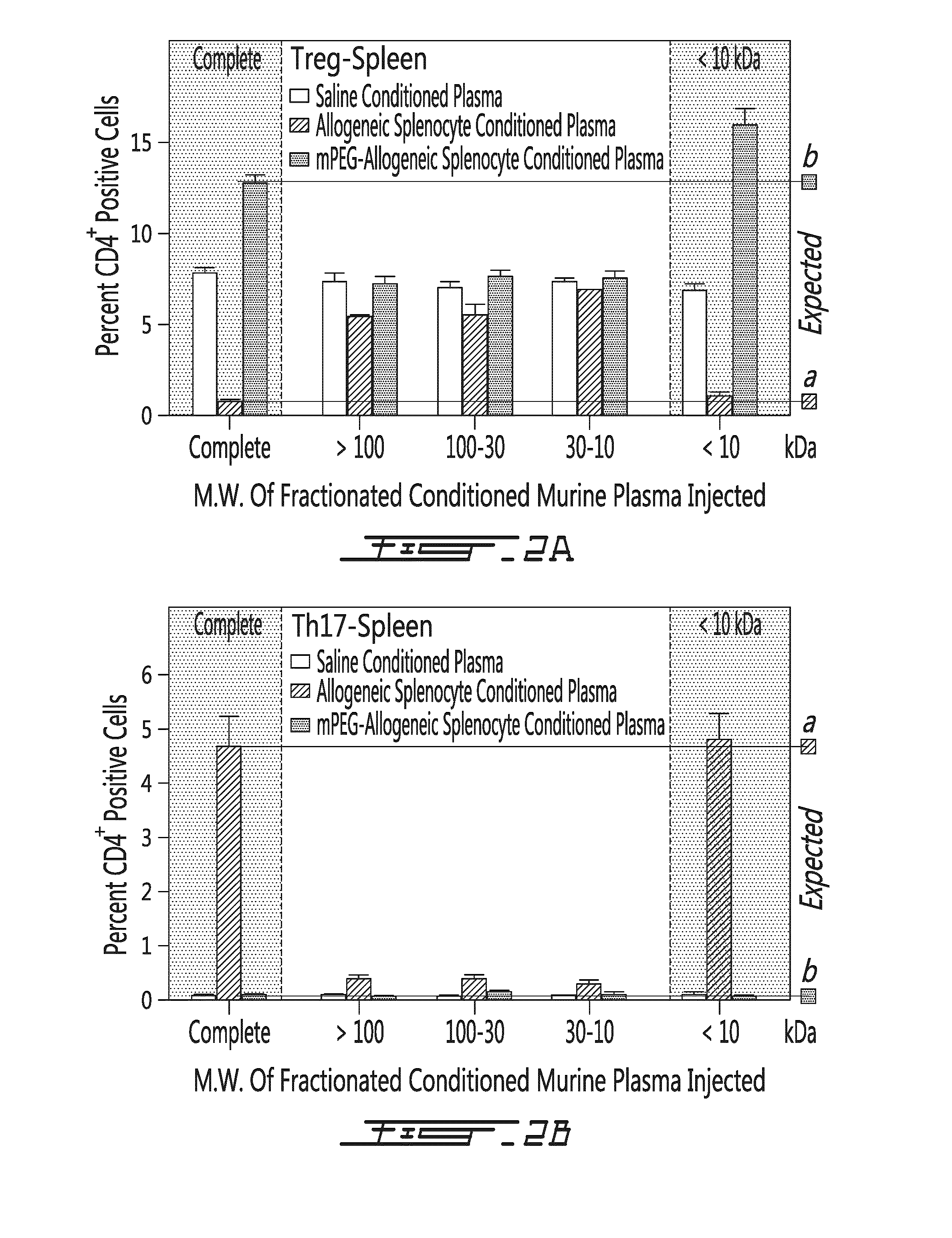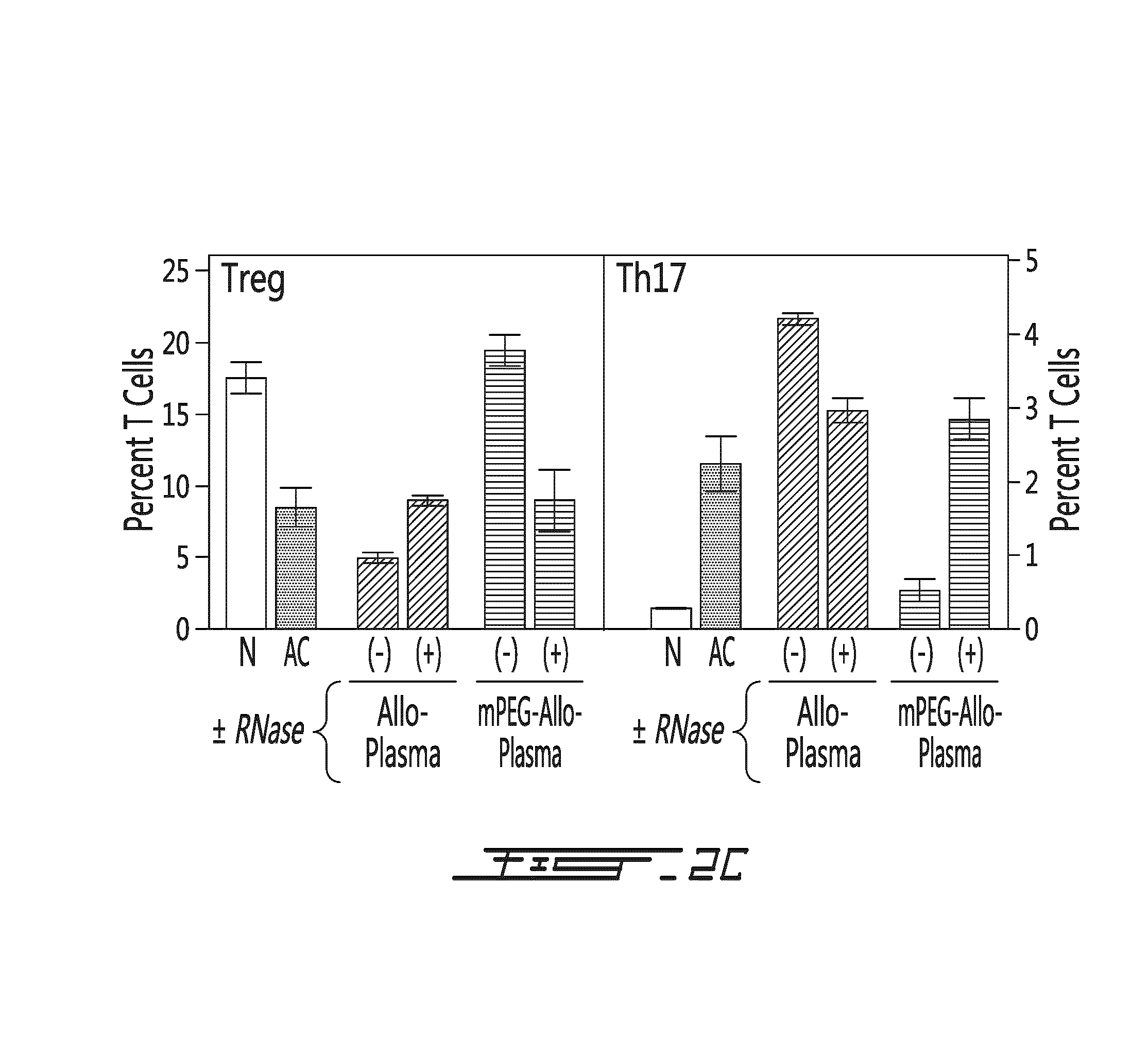Acellular Pro-Tolerogenic Compositions for the Treatment/Prevention of Auto-Immune Diseases
a technology of auto-immune diseases and compositions, applied in the field of pro-tolerogenic preparations, can solve the problems of chronic toxicity of all clinically approved anti-rejection drugs, the acute and chronic rejection of donor tissues and organs remains a significant clinical problem, and achieves the effects of promoting the production of opsonizing antibodies, maximizing the killing effect of macrophages and proliferation, and promoting the cellular immune respons
- Summary
- Abstract
- Description
- Claims
- Application Information
AI Technical Summary
Benefits of technology
Problems solved by technology
Method used
Image
Examples
example i
Material and Methods
Human PBMC and Dendritic Cell Preparation.
[0114]Human whole blood was collected in heparinized vacutainer blood collection tubes (BD, Franklin Lakes, N.J.) from healthy volunteer donors following informed consent. PBMC were isolated from diluted whole blood using FicollePaque PREMIUM™ (GE Healthcare Bio-Sciences Corp, Piscataway, N.J.) as per the product instructions. The PBMC layer was washed twice with 1× Hank's Balanced Salt Solution (HBSS; without CaCl2 and MgSO4; Invitrogen by Life Technologies, Carlsbad, Calif.) and resuspended in the appropriate media as needed for mixed lymphocyte reactions and flow cytometric analysis of Treg and Th17 phenotypes. Dendritic cells (DC) were prepared from isolated PBMC as described by O'Neill and Bhardwaj (O'Neill et al., 2005). Briefly, freshly isolated PBMC were overlaid on Petri dishes for 3 h in AIM V serum free culture medium (Invitrogen, Carlsbad, Calif.). Non-adherent cells were gently washed off the plate. The adher...
example ii
In Vitro and In Vivo Immunomodulation of Size-Fractionated Acellular Preparations
[0129]Two-way human PBMC MLRs were prepared using the conditioned medium collected at 72 hours from mPEG MLR as the primary MLR. The conditioned medium was fractionated with respect to its molecular weight (higher or lower than 10 kDa). As shown on FIG. 1, the fraction of the conditioned medium derived from PEGylated MLR and having a molecular weight of less than 10 kDa retained the ability to increase human Treg levels in vitro. As also shown in FIG. 1, the fraction having a molecular weight higher than 10 kDa did not have the ability to increase Treg levels in vitro in the secondary MLR.
[0130]A conditioned cell-free plasma from untreated mouse (naïve), mouse having received saline (saline), allogeneic unmodified splenocytes (allogeneic) and PEGylated allogeneic splenocytes (mPEG-allogeneic) were obtained 5 days after treatment. The conditioned plasma was either left untreated (e.g. complete) or fracti...
example iii
In Vitro and In Vivo Immune Modulation by miRNA-Enriched Acellular Preparations
[0134]The conditioned plasma or the miRNA preparation (100 μL) obtained from the conditioned plasma (of mice having received saline, unmodified allogeneic splenocytes or polymer-modified allogeneic splenocytes) were administered intravenously to 7-8 week-old mice thrice (at days 0, 2 and 4). Cohorts (n=4) of mice were sacrificed at days 30, 60, 120, 180 and 270. Spleens were removed and CD4+ cells were stained for intracellular expression of IL-2, IL-4, IL-10, INF-γ and TNF-α. Splenic Treg and Th17 populations were also measured. As shown on FIGS. 4A-C, the administration of the conditioned plasma or the derived miRNA preparation from mouse having received unmodified allogeneic splenocytes caused an increase in the expression of intracellular IL-2 and INF-γ in CD4+ cells. On the other hand, the administration of the conditioned plasma or the derived miRNA preparation from mouse having received mPEG-modifi...
PUM
| Property | Measurement | Unit |
|---|---|---|
| molecular weight | aaaaa | aaaaa |
| average molecular weight | aaaaa | aaaaa |
| molecular weight fraction | aaaaa | aaaaa |
Abstract
Description
Claims
Application Information
 Login to view more
Login to view more - R&D Engineer
- R&D Manager
- IP Professional
- Industry Leading Data Capabilities
- Powerful AI technology
- Patent DNA Extraction
Browse by: Latest US Patents, China's latest patents, Technical Efficacy Thesaurus, Application Domain, Technology Topic.
© 2024 PatSnap. All rights reserved.Legal|Privacy policy|Modern Slavery Act Transparency Statement|Sitemap



